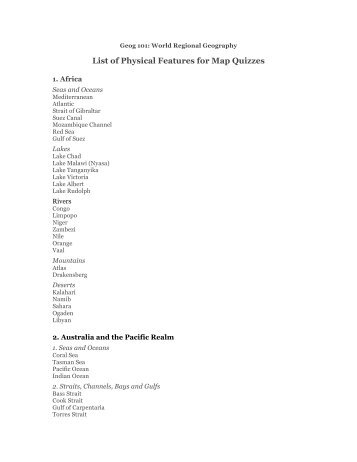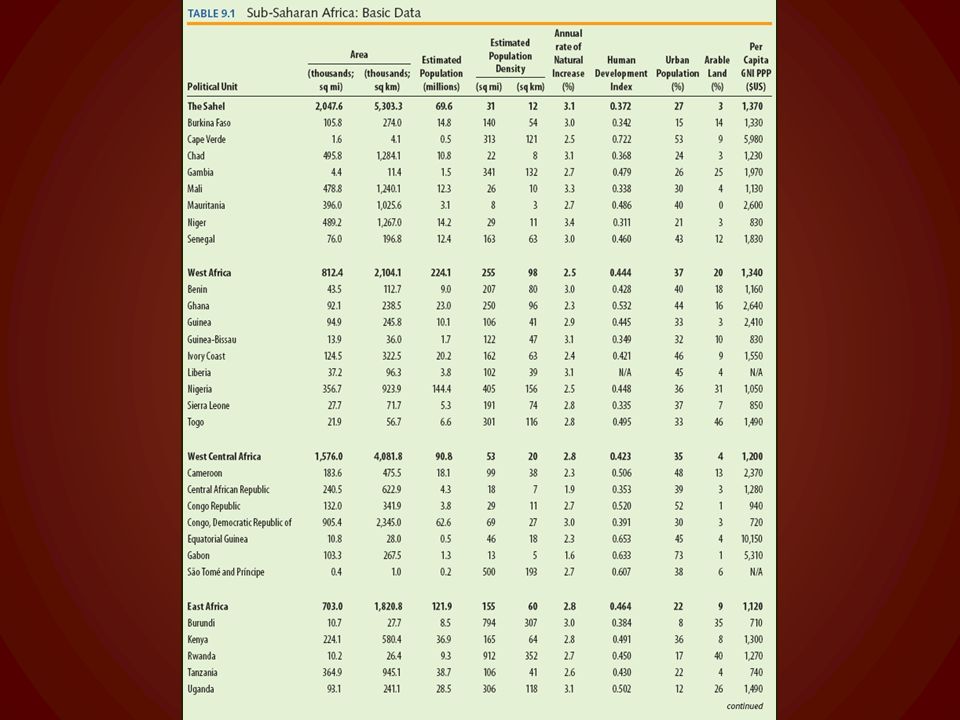Contemporary World Regional Geography 4th Edition Chapter 1


Dell Windows Server 2012 Foundation Rok Download Movies here. Chapter review overview: geography as discipline geo helps us understand our world. The concept of living, working, and sharing together in common place leads. The population of Sudan in 2005 was estimated by the United Nations (UN) at 40,187,000, which placed it at number 30 in population among the 193 nations of the world.
Republic of Republiek van Suid-Afrika CAPITAL: (administrative); (legislative); Bloemfontein (judicial) FLAG: The national flag, adopted in 1994, consists of a blue-black triangle placed vertical to the hoist and bordered in gold-yellow. Bands of red, white, green, white, and blue appear horizontally. ANTHEM: Two anthems are currently in use: the official anthem, Die Stem van Suid-Afrika (The Call of South Africa), and Nkosi Sikelel' Afrika (God Bless Africa), a hymn adopted by most liberation groups. MONETARY UNIT: The South African rand (r) is a paper currency of 100 cents. It is used throughout the South African monetary area. There are coins of 1, 2, 5, 10, 20, and 50 cents and 1 rand, and notes of 2, 5, 10, 20, and 50 rand. R1 = $0.16155 (or $1 = r6.19) as of 2005.
WEIGHTS AND MEASURES: The metric system is in use. HOLIDAYS: New Year's Day, 1 January; Republic Day, 31 May; Kruger Day, 10 October; Day of the Vow, 16 December;, 25 December; Goodwill Day, 26 December.
Movable religious holidays include Good Friday and Ascension; Family Day is a movable secular holiday. Malayalam Fonts Free Download For Mac. TIME: 2 pm = noon GMT. The area of South Africa is 1,219,912 sq km (471,011 sq mi). Comparatively, the area occupied by South Africa is slightly less than twice the size of the state of. Considered as a whole, South Africa extends 1,821 km (1,132 mi) ne –sw and 1,066 km (662 mi) se –nw. It is bounded on the n by and Zimbabwe (formerly Rhodesia), on the ne by and Swaziland, on the e by the, on the s by the confluence of the Indian and Atlantic oceans, on the w by the, and on the nw.
South Africa also controls two small islands, Prince Edward and Marion, which lie some 1,920 km (1,200 mi) southeast of Cape Town. South Africa's capital city, Pretoria, is located in the northeastern part of the country. South Africa has a mean altitude of about 1,200 m (3,900 ft), and at least 40% of the surface is at a higher elevation. Parts of are more than 1,800 m (6,000 ft) above sea level. There are three major zones: the marginal regions, which range in width from 80 to 240 km (50 –150 mi) in the east to 60 –80 km (35 –50 mi) in the west, and including the eastern plateau slopes, Cape folded belt, and western plateau slopes; a vast saucer-shaped interior plateau, separated from the marginal zone by the Great Escarpment; and the Basin, only the southern part of which projects into north-central South Africa.
The land rises steadily from west to east to the Drakensberg Mountains (part of the Great Escarpment), the tallest of which is Mt. Injasuti (3,408 m/11,181 ft), on the border with Lesotho. The coastal belt of the west and south ranges between 150 and 180 m (500 and 600 ft) above sea level and is very fertile, producing citrus fruits and grapes, particularly in the western Cape. North of the coastal belt stretch the Little and the Great Karoo highlands, which are bounded by mountains, are semiarid to arid, and merge into sandy wastes that ultimately join the arid Kalahari. The high grass prairie, or veld, of the Orange Free State and the is famous for its deposits of gold and silver; other minerals are found in the Transvaal's bush veld.
From the Drakensberg, the land falls toward the Indian Ocean in the rolling hills and valleys of, which are covered with rich vegetation and, near the coast, subtropical plants, including sugarcane. The two most important rivers draining the interior plateau are the Orange (with its tributary the Vaal), which flows into the Atlantic Ocean, and the Limpopo, which empties into the Indian Ocean through Mozambique. Of the fast-flowing rivers with steeply graded courses that produce spectacular waterfalls, the largest is the Tugela, which rises in the Mont-aux-Sources and flows swiftly to the Indian Ocean.
South Africa lies almost wholly within the southern temperate zone, and its climate is more equable than that of corresponding northern latitudes because of its surrounding waters. Temperature differentials between east and west coasts stem from the influences, respectively, of the warm Mozambique (Agulhas) Current and the cold Current. The average daily minimum temperature at Durban, on the east coast, ranges from 11 °c (52 °f) in July to 21 °c (70 °f) in February; on the west coast, at Port Nolloth, the range is from 7 °c (45 °f) to 12 °c (54 °f) during the corresponding months.



